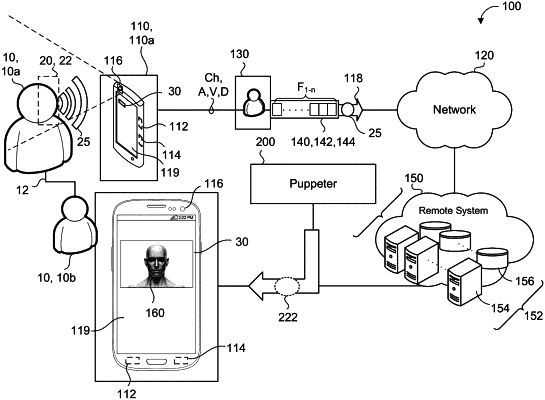| CPC G06T 13/40 (2013.01) [G06T 7/13 (2017.01); G06T 7/73 (2017.01); G06T 17/20 (2013.01); G06T 19/20 (2013.01); G06T 2207/10024 (2013.01); G06T 2207/30201 (2013.01); H04L 67/10 (2013.01)] | 18 Claims |

|
1. A computer-implemented method when executed by data processing hardware causes the data processing hardware to perform operations comprising:
receiving, from a first user device associated with a first user, a first captured image comprising a first facial framework of a face of the first user and associated audio data spoken by the first user;
identifying, from the first facial framework, a facial cavity corresponding to at least one of an eye of the first user or a mouth of the first user;
rendering the facial cavity onto the first facial framework;
determining a facial texture corresponding to the face of the first user based on the first facial framework with the rendered facial cavity;
transmitting, to a second user device associated with a second user, the facial texture as a three-dimensional avatar corresponding to a virtual representation of the face of the first user and the associated audio data spoken by the first user, the second user device configured to synchronously display the three-dimensional avatar and output the associated audio data;
receiving, from the first user device, a second captured image comprising a second facial framework of the face of the first user;
updating the facial texture based on the second facial framework; and
transmitting, to the second user device, the updated facial texture as the three-dimensional avatar corresponding to the virtual representation of the face of the first user.
|